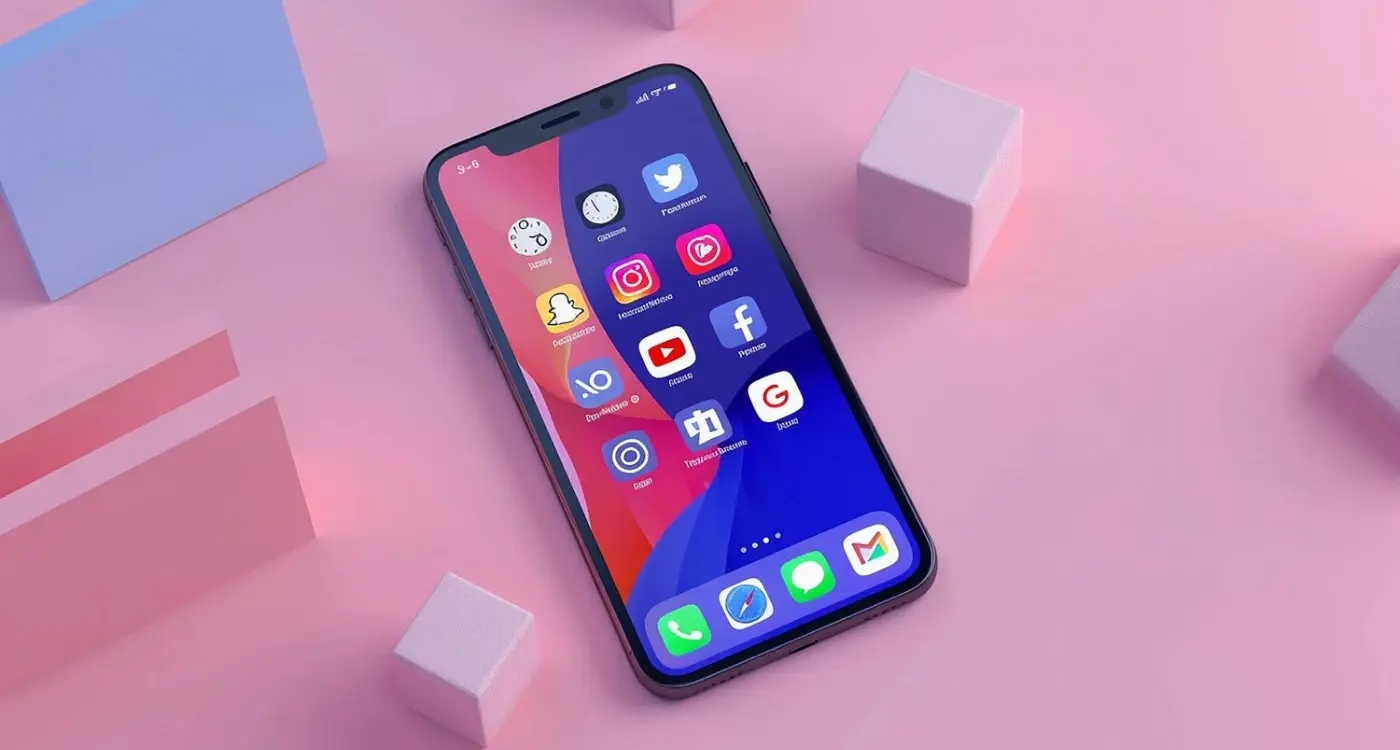Native vs Hybrid Apps: Which Path Should Your Business Take?
In today's digital landscape, deciding how to build your mobile application is a bit like choosing between a bespoke suit and one that's ready-to-wear - both have their unique advantages. As mobile app development specialists since 2015, we've guided countless businesses through this crucial decision, and we understand it can feel overwhelming.
The success of your mobile application isn't just about what you build - it's about how you build it to serve your users' needs.
Whether you're a startup founder with a groundbreaking idea or an established business looking to expand your digital presence, the choice between native and hybrid mobile app development will significantly impact your project's success. It's a decision that affects everything from your budget and timeline to the end-user experience.
Think of this guide as your friendly companion through the maze of mobile application development options. We'll break down the complex technical aspects into bite-sized, understandable pieces, sharing real-world insights we've gathered from developing hundreds of apps across both approaches.
Throughout this guide, we'll explore the strengths and limitations of both native and hybrid apps, examine development costs and timelines, and look at how each approach might align with different business goals. We'll skip the technical jargon and focus on what really matters - helping you make an informed decision that best serves your business needs and your users.
So, let's begin this journey together and uncover which path - native or hybrid - might be the perfect fit for your mobile app vision.
Understanding Native Apps
When we talk about native apps, think of them as applications that are specially crafted for a specific platform - like a bespoke suit that's tailored to fit perfectly. These apps are written in the platform's preferred programming language: Swift or Objective-C for iOS, and Java or Kotlin for Android.
What Makes Native Apps Special?
Native apps are like local residents who know every shortcut in town. They have direct access to your device's features - camera, GPS, accelerometer, and more. Imagine trying to take a quick photo with your banking app to deposit a cheque; a native app can access your camera instantly, making the process smooth as butter.
The Native Advantage
The beauty of native apps lies in their seamless integration with the operating system. They follow platform-specific design guidelines (Material Design for Android or Human Interface Guidelines for iOS), making them feel like a natural extension of your device. It's like walking into a local pub where everything feels familiar and comfortable.
Having worked with countless businesses over the past eight years, we've seen native apps shine particularly bright in scenarios where performance is crucial. Think of graphics-heavy games, video editing tools, or apps that need to process large amounts of data. They're like sports cars - built for optimal performance on their specific tracks.
However, it's worth noting that this specialised nature comes with its own considerations. Native apps require separate development for each platform, which can affect your timeline and budget - but for many businesses, the enhanced user experience and performance make it a worthwhile investment.
Understanding Hybrid Apps
Hybrid apps are applications that combine web and native technologies, operating through a native container that enables app store distribution. These applications leverage web technologies like HTML, CSS, and JavaScript while maintaining compatibility with device features.
How Hybrid Apps Work
The architecture employs web technologies within a native wrapper, enabling access to device capabilities. Through frameworks like React Native or Flutter, these applications interface with device features such as cameras and GPS while maintaining their web-based core structure.
The Appeal of Hybrid Development
Hybrid development presents an option for cross-platform deployment through shared codebases. This approach can influence development timelines and resource allocation, though teams must carefully evaluate whether it aligns with their specific requirements and performance needs.
Modern frameworks have evolved since React Native's 2015 introduction, with various organisations implementing hybrid approaches in different ways. Some companies utilise hybrid development for certain features while maintaining native code for others, demonstrating the range of implementation strategies available based on specific project requirements.
When considering hybrid app development, look for frameworks with strong community support and regular updates. Popular options like React Native and Flutter often receive monthly updates and have extensive libraries of pre-built components, saving valuable development time.
Development Time and Cost Comparison
When it comes to app development, time and money are often at the forefront of decision-making – and rightfully so. It's rather like choosing between building a bespoke house (native) or purchasing a modular home (hybrid). Let's break down these crucial factors to help you understand what to expect.
Development Timeline Differences
Native app development typically requires more time because you're essentially creating separate apps for each platform. Think of it as writing two different books rather than translating one book into another language. A native iOS and Android app might take 4-6 months each to develop. In contrast, hybrid apps can be developed in roughly half that time, as you're working with a single codebase that works across platforms.
Cost Implications
Initial development expenses for native apps often encompass distinct teams for iOS and Android platforms, with specialised expertise required for each. Medium-complexity native applications typically range from £20,000-£40,000 per platform. Development approaches using shared codebases may reduce initial costs by approximately 30-40%.
However, it's worth noting that the initial savings of hybrid development might be offset by future maintenance costs, particularly if you need platform-specific features or optimisations. It's rather like buying a cheaper printer – the initial cost seems attractive, but replacement cartridges might cost more in the long run.
Remember, these figures are general estimates, and actual costs can vary significantly based on your specific requirements, feature complexity, and geographical location of your development team.
Performance and User Experience
When it comes to mobile app development, performance and user experience can make or break your application's success. Let's explore how native and hybrid apps compare in these crucial aspects.
Native App Performance
Native apps typically offer superior performance because they're built specifically for each platform. Think of it like wearing a tailored suit versus an off-the-rack option - everything just fits better. These apps can directly access device features like the camera, GPS, and accelerometer, resulting in faster response times and smoother animations. For resource-intensive applications like games or video editing tools, this optimised performance is particularly vital.
Performance isn't just about speed - it's about creating moments where technology feels invisible and user experience becomes intuitive
Hybrid App Experience
Hybrid apps have come a long way in recent years, but they still face some inherent challenges. Because they run through a web container, there's an extra layer between the app and the device's hardware. It's similar to speaking through a translator - whilst you can get your message across, there might be slight delays or nuances lost in translation. However, for simpler applications like content-based apps or basic business tools, users might not notice any significant difference in performance.
From mobile development experience, the choice between approaches often aligns with your product vision and market strategy. Native development excels at delivering fluid, high-performance applications with seamless interactions and platform-optimised experiences. This path is particularly suited for products where user experience and brand perception are paramount, or when aiming to establish a strong market presence.
However, if your immediate goal is market validation or you're operating with initial budget constraints, hybrid development offers a pathway to test your concept with users. This approach allows you to gather user feedback and validate market assumptions before potentially investing in a more refined native solution.
Platform Compatibility and Updates
When it comes to keeping your app running smoothly across different platforms and managing updates, native and hybrid apps each present unique scenarios. Let's explore this crucial aspect that often keeps business owners awake at night (we've been there too!).
Platform-Specific Considerations
With native apps, you're essentially creating separate versions for iOS and Android. Think of it like crafting a bespoke suit – it fits perfectly but requires individual attention for each platform. When Apple or Google release new features or design guidelines, you'll need to update each version separately, which can feel like juggling two different projects.
Hybrid apps, on the other hand, work more like a versatile piece of clothing that adapts to different occasions. One codebase runs across multiple platforms, making updates generally more straightforward. However, you might occasionally face delays in accessing the latest platform features until your hybrid framework supports them.
Update Management
- Native Apps: Direct platform-specific updates with immediate access to new OS features
- Hybrid Apps: Single codebase updates that roll out simultaneously across platforms
- Native Apps: More complex version control but better platform optimisation
- Hybrid Apps: Simplified update process but potential framework compatibility delays
From our experience working with businesses across various sectors, we've found that companies with frequent update requirements often lean towards hybrid apps for their streamlined maintenance process. However, if your business heavily relies on platform-specific features or requires immediate access to new OS capabilities, the native route might be more suitable.
Security Considerations
When it comes to mobile app development, security isn't just a checkbox - it's an absolute necessity. With cyber threats becoming increasingly sophisticated, choosing between native and hybrid apps can significantly impact your application's security posture.
Native App Security
Native apps generally offer stronger security features out of the box. Because they're built specifically for each platform, they can fully utilise the device's built-in security features - much like how a key that's cut specifically for your front door will always be more secure than a universal skeleton key. These apps can directly access the device's security features like fingerprint scanning, face recognition, and secure elements for storing sensitive data.
Hybrid App Security
Hybrid apps, while continuously improving, typically require additional security layers. Think of them as wearing two jumpers instead of one thick winter coat - they can still keep you warm, but you'll need to put in extra effort. Because hybrid apps run in a browser-like container, they might be more vulnerable to web-based attacks and require careful implementation of security measures.
During our eight years of mobile app application development experience, we've observed that both approaches can be secure when implemented properly. The key difference lies in the effort required - native apps start with a stronger security foundation, while hybrid apps need more careful consideration during development.
When handling sensitive data like financial or healthcare information, consider going native. The additional development cost could be worth it for the enhanced security features and peace of mind.
Business Cases and Success Stories
Let's explore some real-world examples that showcase how different companies have succeeded with both native and hybrid approaches. We understand that seeing actual implementations can help you better envision the path forward for your own project.
Native App Success Stories
Instagram's initial success came from its native iOS app, which delivered the smooth, responsive photo-sharing experience we all know today. Similarly, Strava, the popular fitness tracking app, chose native development to ensure precise GPS tracking and seamless integration with device sensors - crucial features for their performance-focused user base.
Hybrid App Victories
On the hybrid front, Instagram's Windows Phone app was actually built as a hybrid solution, proving that hybrid apps can maintain high standards when appropriately implemented. Another example is the BBC News app, which uses hybrid technology to deliver consistent news experiences across platforms whilst maintaining quick update capabilities - particularly useful during breaking news situations.
What's fascinating is how these choices aligned with each company's specific needs. For instance, when Uber first launched, they opted for native development to ensure reliable GPS functionality and real-time updates. However, their driver app later adopted a hybrid approach to speed up deployment of new features across platforms.
The key takeaway from these success stories isn't that one approach is superior, but rather that success comes from choosing the solution that best matches your business requirements, technical needs, and user expectations. Just as a local coffee shop might have different needs from a multinational chain, your app's development approach should reflect your unique circumstances.
Making the Right Choice for Your Business
After exploring both native and hybrid mobile app development approaches, you might be wondering which path is truly right for your business. It's a bit like choosing between a bespoke suit and a well-tailored off-the-rack option - both have their merits, and the best choice depends on your specific needs.
The success of your mobile application isn't determined by the development approach alone, but by how well it aligns with your business goals, user needs, and available resources.
Key Decision Factors
First, consider your budget and timeline. If you're a startup looking to test the waters quickly, hybrid development might be your best bet. However, if you're an established business or require top-notch performance and user experience, native development could be worth the investment.
Think about your target audience, too. Are they primarily iOS or Android users? Do they expect cutting-edge features? Understanding your users' needs and preferences is crucial in making this decision.
Resource Considerations
Take stock of your available resources. Native mobile app development typically requires separate teams for iOS and Android, while hybrid development can be managed by a single team familiar with web technologies. Consider whether you have the expertise in-house or need to partner with development specialists.
Remember, this isn't a permanent decision. Many successful businesses start with a hybrid approach to test the market and later transition to native apps as they grow. What matters most is choosing an approach that aligns with your current business objectives while leaving room for future growth and adaptation.
Technical Requirements and Resources
When embarking on your app development journey, having the right technical foundation is like building a house - you need proper tools and materials before you start. Let's explore what you'll need for both native and hybrid development approaches.
Native App Development Requirements
For native development, you'll need separate development environments for each platform. For iOS, that means working with Xcode (which requires a Mac) and having knowledge of Swift or Objective-C. For Android, you'll need Android Studio and expertise in Kotlin or Java. It's worth noting that these tools are free, but Apple's developer licence costs £99 annually, while Google's is a one-time fee of £25.
Hybrid App Development Requirements
Hybrid development typically requires a lighter technical setup. Popular frameworks like React Native or Flutter can run on any operating system, making them more accessible. You'll need Node.js installed, a code editor (like Visual Studio Code), and knowledge of JavaScript or Dart (for Flutter). The beauty of hybrid development is that one codebase and one development environment can serve both platforms.
Whether you choose native or hybrid, you'll also need version control (like Git), testing devices or simulators, and analytics tools to monitor your app's performance. Think of it like a chef's kitchen - while a professional chef (native development) might need specialised tools for each cuisine, a versatile home cook (hybrid development) can create wonderful dishes with a more streamlined set of equipment.
Remember, the technical requirements shouldn't be intimidating. Many of these tools have excellent documentation and supportive communities ready to help you get started.
Conclusion
Choosing between native and hybrid mobile app development isn't always a straightforward decision - much like deciding between a bespoke suit and a well-tailored off-the-rack option. Both have their merits, and what works brilliantly for one business might not be the ideal solution for another.
Throughout this guide, we've explored how native apps offer superior performance and seamless user experience, making them perfect for businesses requiring complex functionalities or high-performance applications. We've also seen how hybrid apps can be a cost-effective solution for companies wanting to reach multiple platforms quickly with a consistent experience.
After eight years of helping businesses navigate this decision, we've learned that success lies not in following trends, but in aligning your choice with your specific business goals, budget, and user needs. Whether you're a startup looking to test the waters with a minimum viable product or an established enterprise requiring a sophisticated mobile application, the key is to make an informed decision based on your unique circumstances.
Remember, mobile app development is not a one-time decision but an ongoing journey. Your initial choice between native and hybrid development should be flexible enough to evolve with your business needs. Whatever path you choose, focus on delivering value to your users whilst maintaining a balance between performance, cost, and time-to-market.
We hope this guide has helped clarify the key considerations for your mobile app development journey. The mobile landscape continues to evolve, but understanding these fundamental differences will help you make choices that serve your business well into the future.
Share this
Subscribe To Our Learning Centre
You May Also Like
These Related Guides

What Are the Different Types of Mobile App?

What Are App Clips and Do You Need Them?



